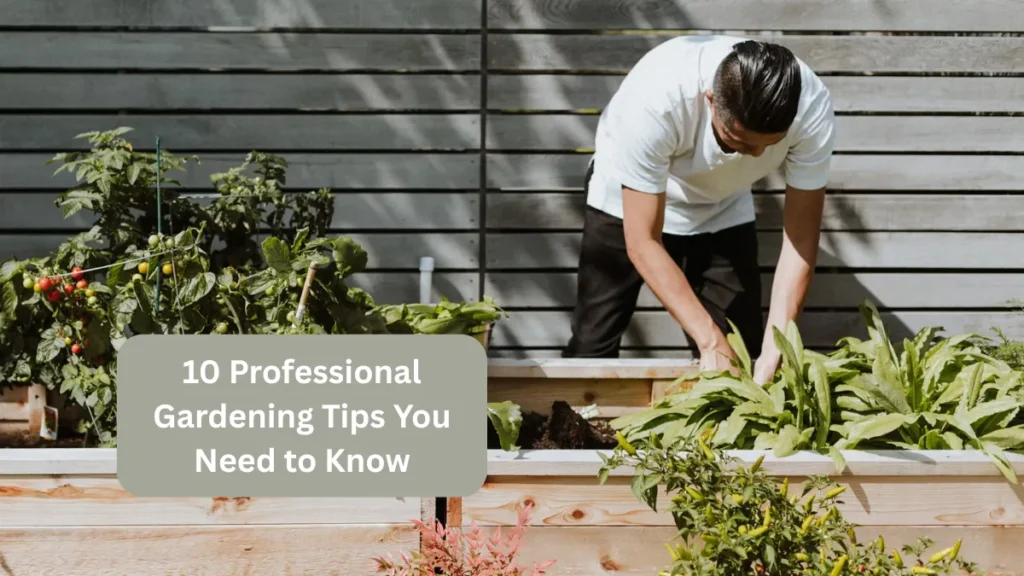Gardening isn’t just about planting flowers—it’s about creating spaces that reflect beauty, functionality, and personal style. From formal layouts to wild, nature-inspired havens, there’s a garden type to suit every lifestyle and climate. Whether you’re a beginner or a seasoned green thumb, understanding the various types of gardens can help you choose the best one for your space and needs.
Here are the top 10 types of gardens you should know about:
1. Formal Garden
Features: Symmetry, geometric shapes, and neatly trimmed plants
Best for: A classic, elegant look with defined structure
Formal gardens are all about balance and order. They often feature hedges, gravel paths, fountains, and statues arranged with perfect symmetry. Think of European palace gardens as inspiration.
2. Cottage Garden
Features: Dense planting, colorful flowers, and a charming, unstructured look
Best for: A whimsical, romantic atmosphere
Cottage gardens are informal and packed with blooms like roses, daisies, and lavender. They create a sense of abundance and are excellent for pollinators.
3. Japanese Garden
Features: Water elements, rocks, moss, and minimalistic design
Best for: Creating peace, reflection, and natural beauty
Japanese gardens focus on simplicity and harmony. They often include bridges, ponds, bonsai, and gravel patterns that promote calm and contemplation.
4. Tropical Garden
Features: Lush greenery, bold colors, and exotic plants
Best for: Warm climates or those who love a jungle vibe
Tropical gardens use broad-leaved plants like banana trees, hibiscus, and palms. These spaces feel vibrant and full of life, often incorporating water features.
5. Xeriscape Garden
Features: Drought-tolerant plants, minimal water use, gravel, and native plants
Best for: Dry climates and water conservation
Xeriscaping is ideal for arid regions. It uses cacti, succulents, and other low-water plants to create beauty without heavy irrigation.
6. Raised Bed Garden
Features: Elevated boxes or frames filled with soil
Best for: Vegetables, herbs, or those with mobility issues
Raised bed gardens are practical, easy to maintain, and great for growing your own food. They also help with soil drainage and reduce weed growth.
7. Vertical Garden
Features: Plants grown upwards on walls, trellises, or shelves
Best for: Small spaces or urban balconies
Vertical gardens save space and add a green touch to patios, balconies, or indoor walls. They’re great for herbs, ferns, and trailing plants.
8. Wildlife Garden
Features: Native plants, bird feeders, insect hotels, and water sources
Best for: Supporting pollinators and local ecosystems
These gardens attract bees, butterflies, birds, and other wildlife. They’re often less manicured but extremely beneficial for the environment.
9. Rock Garden
Features: Stones, gravel, and hardy, low-growing plants
Best for: Slopes, dry areas, or minimalist design lovers
Rock gardens combine texture and structure. They often feature succulents, alpine plants, and drought-tolerant species in artistic arrangements.
10. Indoor Garden
Features: Houseplants, hanging pots, and container gardening inside homes
Best for: Apartment dwellers or anyone without outdoor space
Indoor gardens bring nature inside. From kitchen herbs to decorative foliage like pothos or snake plants, they boost air quality and mood.
Conclusion
Each type of garden serves a unique purpose, whether it’s conserving water, feeding your family, or simply creating a serene outdoor space. By understanding these different styles, you can choose—or combine—ones that best suit your environment, space, and personal taste.
FAQs
1. Which garden type is best for small spaces?
Vertical gardens and indoor gardens are ideal for limited space, like balconies or apartments.
2. What kind of garden needs the least water?
Xeriscape gardens use drought-tolerant plants and require very little watering.
3. Can I mix different garden styles?
Yes! Many gardeners blend styles—like combining cottage flowers with vertical herb walls—for unique results.
4. What garden is best for attracting butterflies and bees?
Wildlife and cottage gardens with native, flowering plants are perfect for pollinators.


